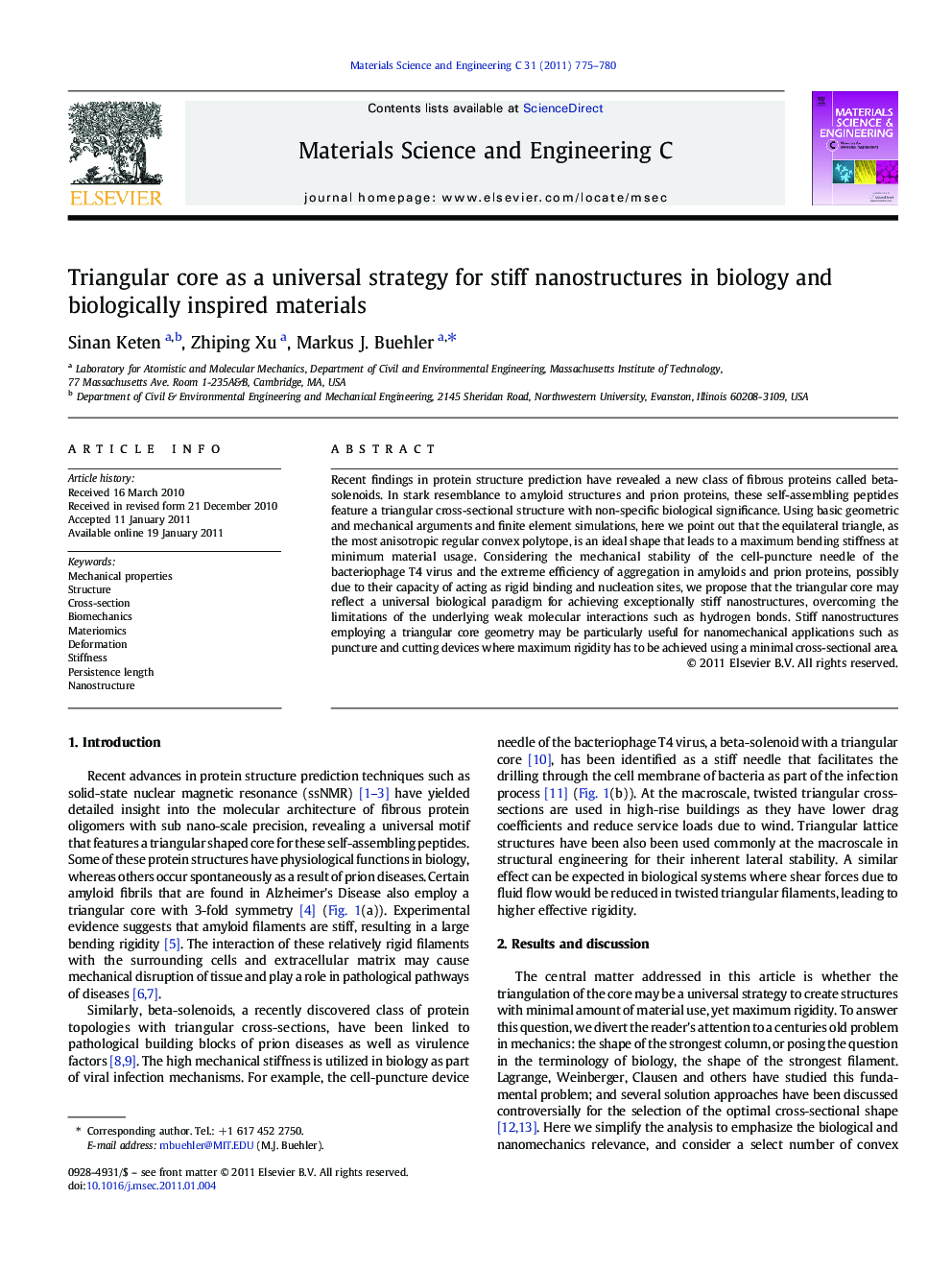| Article ID | Journal | Published Year | Pages | File Type |
|---|---|---|---|---|
| 1429798 | Materials Science and Engineering: C | 2011 | 6 Pages |
Recent findings in protein structure prediction have revealed a new class of fibrous proteins called beta-solenoids. In stark resemblance to amyloid structures and prion proteins, these self-assembling peptides feature a triangular cross-sectional structure with non-specific biological significance. Using basic geometric and mechanical arguments and finite element simulations, here we point out that the equilateral triangle, as the most anisotropic regular convex polytope, is an ideal shape that leads to a maximum bending stiffness at minimum material usage. Considering the mechanical stability of the cell-puncture needle of the bacteriophage T4 virus and the extreme efficiency of aggregation in amyloids and prion proteins, possibly due to their capacity of acting as rigid binding and nucleation sites, we propose that the triangular core may reflect a universal biological paradigm for achieving exceptionally stiff nanostructures, overcoming the limitations of the underlying weak molecular interactions such as hydrogen bonds. Stiff nanostructures employing a triangular core geometry may be particularly useful for nanomechanical applications such as puncture and cutting devices where maximum rigidity has to be achieved using a minimal cross-sectional area.
